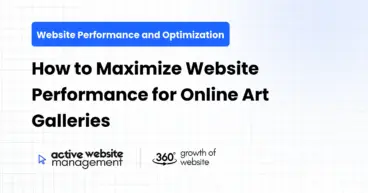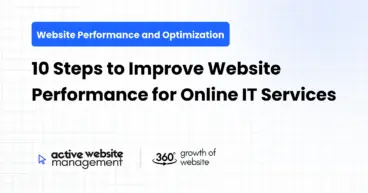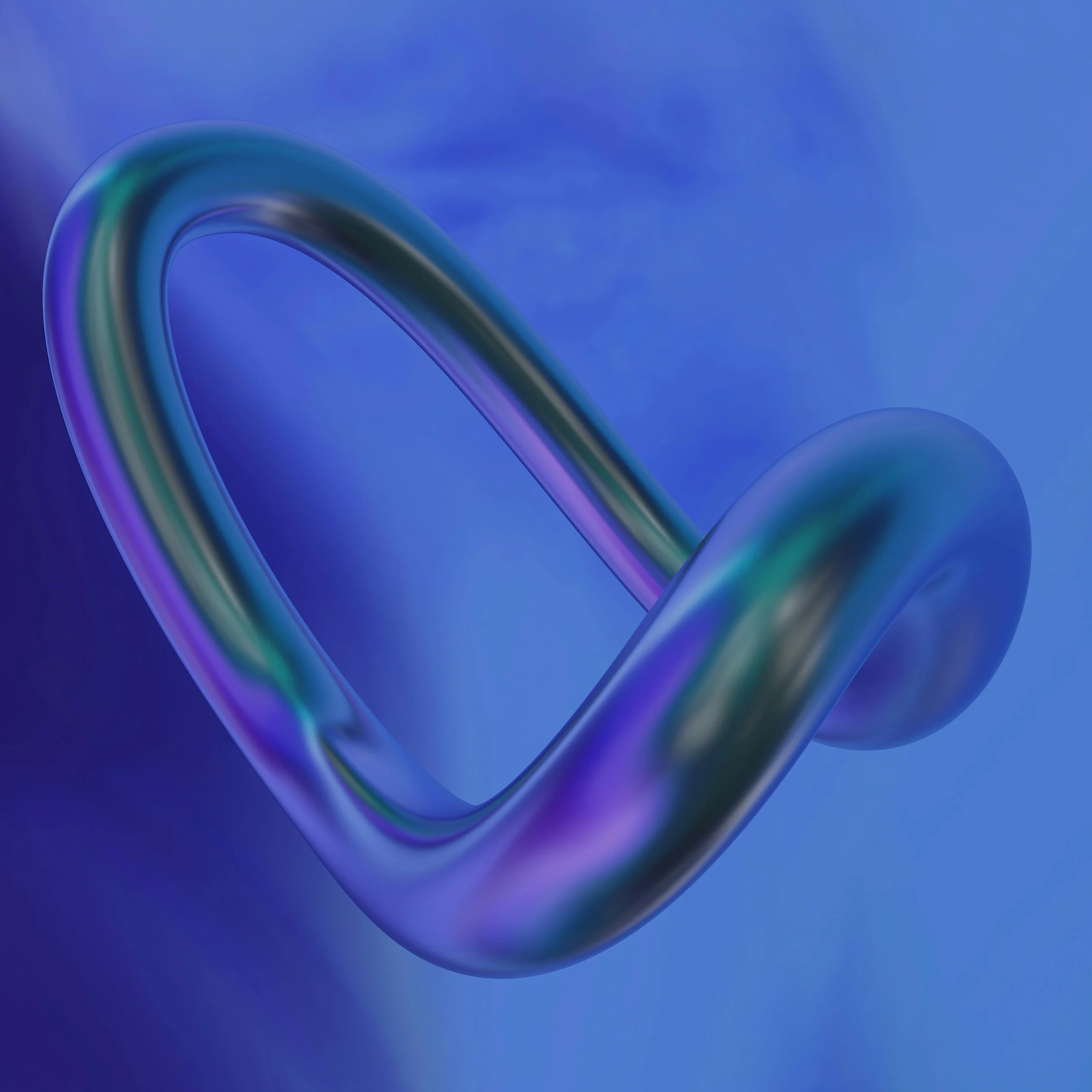October 27, 2024
8 min read
Website health is a crucial factor that directly affects the performance, user experience, search engine ranking, and overall success of any online presence. A healthy website runs smoothly, loads quickly, and offers a seamless experience across all devices. In contrast, a poorly maintained website may face frequent downtimes, security breaches, slow performance, and ultimately drive users away. In this guide, we will explore all aspects of website health, from performance to security, and show you how Active Website Management (AWM) can keep your site in top condition.
By understanding and implementing the essential practices for website health, you can ensure your website attracts and retains visitors, improves conversions, and ranks better on search engines.
What is Website Health?
Website health refers to the overall well-being and functionality of your website. A healthy website runs efficiently, is secure, loads quickly, and provides a positive user experience. Several key factors contribute to maintaining website health:
- Performance optimization: Speed and loading times
- Security: Protection from hacks and malware
- SEO: Ensuring search engine visibility and ranking
- Design and user experience: Intuitive navigation and interaction
- Content management: Keeping your site updated and relevant
Why is Website Health Important?
Maintaining your website’s health has long-lasting effects on several key aspects:
1. User Experience
A healthy website provides visitors with a seamless, enjoyable experience. Faster load times, clear navigation, and mobile-friendly design all contribute to user satisfaction. If your website is slow or difficult to use, you risk losing potential customers.
Don’t Just Maintain Your Website—
Grow It using Active Website Management! Don't Wait for Growth—Accelerate It with Active Website Management
2. Search Engine Rankings
Search engines like Google prioritize websites that are well-maintained, secure, and provide great user experiences. A healthy website is more likely to rank higher on search engine results pages (SERPs), which directly leads to increased visibility and organic traffic.
3. Conversion Rates
A fast, secure, and well-designed website creates trust with your audience. Visitors are more likely to convert when they feel confident that your site is reliable. Whether it’s purchasing a product, subscribing to a newsletter, or filling out a form, conversions are directly impacted by how well your website performs.
4. Security
A secure website is fundamental to protecting sensitive user data and maintaining trust. Regular health checks and updates prevent vulnerabilities, hacking, and malware.
5. Cost Efficiency
A well-maintained website requires fewer emergency fixes and runs smoothly, reducing the overall maintenance cost over time.
Key Components of Website Health
Maintaining website health involves multiple aspects that work together to ensure optimal performance. Here’s a breakdown of the key components:
Your website’s speed and performance are critical factors in both user experience and SEO ranking. Key practices for optimizing performance include:
- Reducing HTTP requests: Combining CSS and JS files reduces the number of server requests.
- Using browser caching: Store website data locally on users’ devices to improve page load times for returning visitors.
- Content Delivery Network (CDN): CDNs distribute your website’s static files (e.g., images, CSS, JS) across multiple servers globally, reducing latency and improving load speed.
- Lazy loading images: Deferring the loading of images until they are needed ensures faster page load times.
2. Security
Security is a non-negotiable aspect of website health. A security breach can lead to data theft, legal issues, and a loss of customer trust. Essential security practices include:
- SSL Certificates: Secure connections between your site and its users.
- Regular updates: Keep software, plugins, and themes up to date to prevent vulnerabilities.
- Firewalls: Block malicious traffic and protect against threats.
- Security plugins: Use WordPress security plugins like Wordfence or Sucuri to enhance protection.
3. Mobile Responsiveness
With more people accessing websites on mobile devices, it is vital that your website is mobile-friendly. Responsive design ensures that your website adapts to various screen sizes, providing a smooth experience on mobile, tablets, and desktops.
4. SEO Health
For your website to rank well in search engines, it must be optimized for SEO. Key aspects include:
- Meta tags: Ensure each page has a unique and relevant title tag, meta description, and appropriate keywords.
- Alt text for images: Search engines cannot “see” images, so using descriptive alt text is essential for SEO.
- Internal linking: Help users navigate your site and increase time on page by linking to related content internally.
Don't Wait for Growth—Accelerate It with
Active Website Management Don't Wait for Growth—Accelerate It with Active Website Management
5. Design and User Experience
A clean, well-designed website is not just aesthetically pleasing but also functional. It should provide users with intuitive navigation, clear call-to-actions (CTAs), and an easy-to-understand layout. Focus on:
- Consistency: Keep design elements like fonts, colors, and button styles uniform across all pages.
- Whitespace: Avoid clutter and make sure the layout is easy on the eyes.
- CTA prominence: Make sure CTAs stand out with bold text and contrasting colors.
6. Content Management
A healthy website is regularly updated with fresh, relevant content. Outdated or irrelevant content can hurt your SEO ranking and diminish your credibility. Regular content audits ensure you’re keeping your site current and engaging for users.
Monitoring your website’s health is crucial to catching issues before they become major problems. Several tools can help track website health, including:
- Google Analytics: Monitors website traffic, user behavior, and conversions.
- Google Search Console: Tracks search performance and identifies SEO issues.
- GTMetrix: Analyzes your website’s speed and performance.
- Pingdom: Tracks your website’s uptime and load times.
- SEMRush: Provides SEO audits and performance insights.
How Active Website Management (AWM) Helps Improve Website Health
Active Website Management plays a pivotal role in maintaining and improving website health. Here’s how AWM can help:
1. Regular Audits and Monitoring
AWM offers regular website audits to identify performance bottlenecks, security risks, and outdated content. By catching potential issues early, you can prevent them from escalating into costly problems.
AWM implements best practices for performance optimization, such as caching, lazy loading, and CDN integration, to ensure your site is fast and responsive. This helps boost user satisfaction and improve your site’s SEO ranking.
3. Security Enhancements
AWM keeps your website secure by regularly updating software, monitoring security logs, and implementing firewalls. With AWM, your website is always protected against evolving security threats.
4. Mobile and UX Improvements
By ensuring mobile responsiveness and refining the user experience, AWM helps your site cater to the growing mobile audience. Your users will enjoy an intuitive, easy-to-navigate website.
5. SEO Optimization
AWM improves your website’s SEO health by regularly checking and optimizing metadata, internal linking, and content relevancy. This ensures that your site stays competitive on search engines.
Common Website Health Issues
Despite the best efforts, websites can still encounter issues that negatively affect their health. Some common problems include:
- Slow Loading Times: Often due to large images, too many plugins, or lack of optimization.
- Outdated Software: Failing to update WordPress themes, plugins, or CMS versions leaves your website vulnerable.
- Broken Links: Links that no longer work hurt both user experience and SEO.
- Duplicate Content: Having identical content across multiple pages can lead to SEO penalties.
- Security Vulnerabilities: Without regular updates and monitoring, your site could fall victim to hacking or malware.
How to Maintain Website Health
Maintaining a healthy website requires ongoing effort. Here are some best practices for keeping your site in top shape:
1. Regular Updates
Ensure your CMS, themes, and plugins are updated frequently to avoid security vulnerabilities.
2. Backups
Regular backups are essential to safeguard your data in case of emergencies. Always store backups offsite and ensure they are automatic.
Frequently test your site’s speed and performance using tools like GTMetrix or Pingdom. Address any issues promptly to ensure smooth user experiences.
4. Security Checks
Run regular security scans and ensure that your website has a functioning firewall and SSL certificate.
5. Content Reviews
Perform periodic content audits to remove outdated content and keep your site relevant. Update images, text, and metadata as needed.
6. SEO Audits
Use SEO tools like SEMRush or Ahrefs to perform regular audits of your website’s SEO health. Fix any issues related to meta tags, internal linking, or keyword use.
Conclusion
Website health is a crucial aspect of your online success. By regularly monitoring and optimizing your website, you can ensure a smooth, secure, and user-friendly experience for visitors. Active Website Management (AWM) provides the tools and expertise to help keep your website running optimally, from performance enhancements to security improvements. With the right practices in place, you can maintain a healthy website that drives traffic, increases engagement, and boosts conversions.
Maintaining website health is an ongoing process, but the benefits it brings in terms of performance, user satisfaction, and search engine rankings are well worth the effort.







